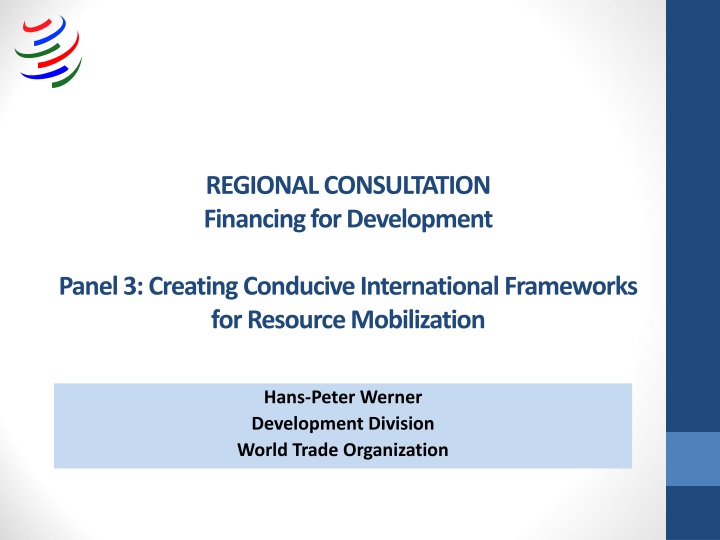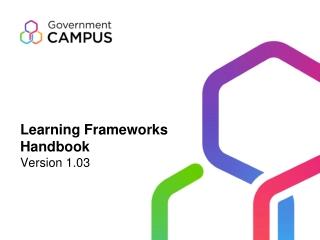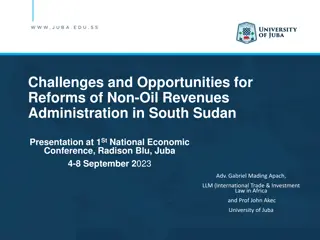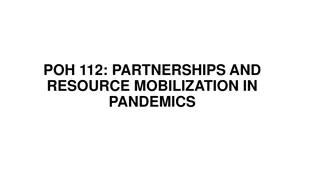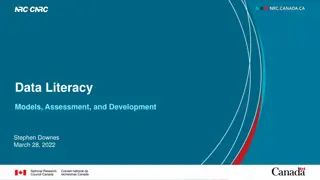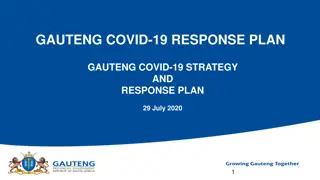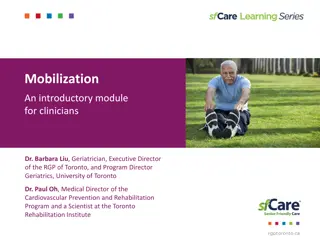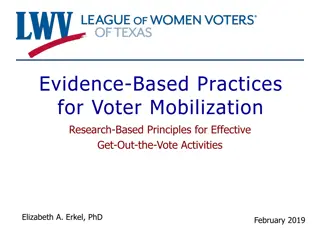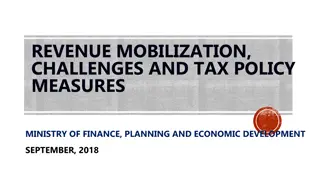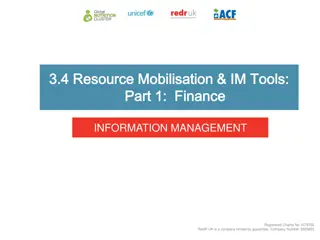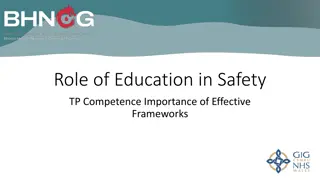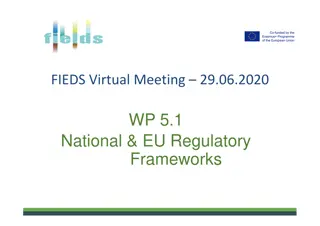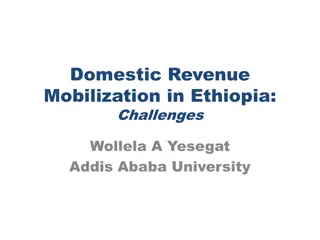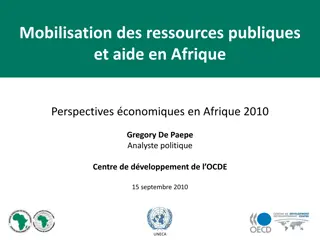Conducive International Frameworks for Resource Mobilization
This panel discusses creating international frameworks for resource mobilization in the context of financing for development. It covers topics such as aid for trade commitments, trade facilitation assistance, and regional programs. The images included provide insights into aid disbursements, trade policy, and the distribution of funds across different regions.
Download Presentation

Please find below an Image/Link to download the presentation.
The content on the website is provided AS IS for your information and personal use only. It may not be sold, licensed, or shared on other websites without obtaining consent from the author.If you encounter any issues during the download, it is possible that the publisher has removed the file from their server.
You are allowed to download the files provided on this website for personal or commercial use, subject to the condition that they are used lawfully. All files are the property of their respective owners.
The content on the website is provided AS IS for your information and personal use only. It may not be sold, licensed, or shared on other websites without obtaining consent from the author.
E N D
Presentation Transcript
REGIONAL CONSULTATION Financing for Development Panel 3: Creating Conducive International Frameworks for Resource Mobilization Hans-Peter Werner Development Division World Trade Organization
AFT -Trade Facilitation Assistance Commitments (Source: OECD-DAC, Credit Reporting System (CRS))
AFT -Trade Facilitation Assistance Disbursements (Source: OECD-DAC, Credit Reporting System (CRS))
Aid for Trade 5thAFT Global Review Reducing Trade Cost for Inclusive, Sustainable Development
Aid for Trade Commitments continue to expand USD billion (2012 constant) 60 56.7 54.1 47.4 50 44.6 42.0 40 33.7 30 25.8 20 10 0 2002-05 avg. 2006-08 avg. 2009 2010 2011 2012 2013 Trade Policy & Regulations Economic Infrastructure Building Productive Capacity Trade-related Adjustment Source: OECD-DAC, Credit Reporting System (CRS)
Resulting in higher disbursements USD billion (2012 constant) 60 50 42.3 39.1 36.9 40 34.1 30.5 30 24.2 20 10 0 2006-08 avg. 2009 2010 2011 2012 2013 Trade Policy & Regulations Economic Infrastructure Building Productive Capacity Trade-related Adjustment Source: OECD-DAC, Credit Reporting System (CRS)
largely benefitting Asia (USD billion 2012 constant) 25 20 15 10 5 0 Africa America Asia Europe Oceania 2002-05 avg. 2006-08 avg. 2009-11 avg. 2012 2013 Source: OECD-DAC, Credit Reporting System (CRS)
and regional and global programmes (USD million 2012 constant) 2500 2000 1500 1000 500 0 Africa America Asia Europe Oceania 2002-05 avg. 2006-08 avg. 2009-11 avg. 2012 2013 Source: OECD-DAC, Credit Reporting System (CRS)
AFT commitments to UNECE Members 2006-08 2010-12 US$ bill. (2012 const.) 2,250 2,098 2,000 1,750 1,500 1,250 977 1,000 750 357334 355 500 181269 228 226142 145 13679 250 79 73 25 24 8 0
AFT commitments to UNECE Members 8 US$ bill. (2012 const.) 7 6 5 4 3 2 1 0 2002-05 2006-08 2009 2010 2011 2012
slight decrease in share of AfT in overall ODA USD billion (2012 constant) Share (%) 150 100 120 80 Total sector allocable (left axis) 90 60 60 40 AFT share (%) 30 20 0 0 2002-2005 avg. 2006-08 avg. 2009 2010 2011 2012 2013 Source: OECD-DAC, Credit Reporting System (CRS)
Aid-for-Trade Top 10 recipients (Source: OECD-DAC, Credit Reporting System (CRS)) Commitments, USD billion (2012 constant) 0.0 1.0 2.0 3.0 4.0 5.0 India 4.0 Turkey 3.3 Vietnam 2.6 Kenya 2.3 Morocco 2.3 Egypt 2.1 Ethiopia 2.0 Afghanistan 1.8 Pakistan 1.6 Brazil 1.3 2012 (50% of total allocated AFT)
Aid-for-Trade Top 10 donors (Source: OECD-DAC, Credit Reporting System (CRS))
AFT and other development finance flows Most important sources of finance to connect firms to value chains according to partner countries Foreign direct investment 53 24 1 Domestic private investment 46 27 2 1 Domestic public investment 30 29 10 Official development assistance 27 28 16 2 Non-concessional financing 14 30 15 11 Income remitted by migrants 7 22 22 12 0% 10% 20% 30% 40% 50% 60% 70% 80% 90% 100% Responses (%) MOST IMPORTANT IMPORTANT NOT IMPORTANT NOT SURE Source: OECD/WTO Aid-For-Trade Questionnaire 2013
Conclusion Post Bali Work Programme, DDA Trade Facilitation / Aid for Trade Key issues and trends: Closer cooperation between the private and public sector Aid for trade and its relation to other development finance flows Growing importance of South-South relationships Post 2015 Development Agenda reducing the cost of trade for inclusive Sustainable Development
